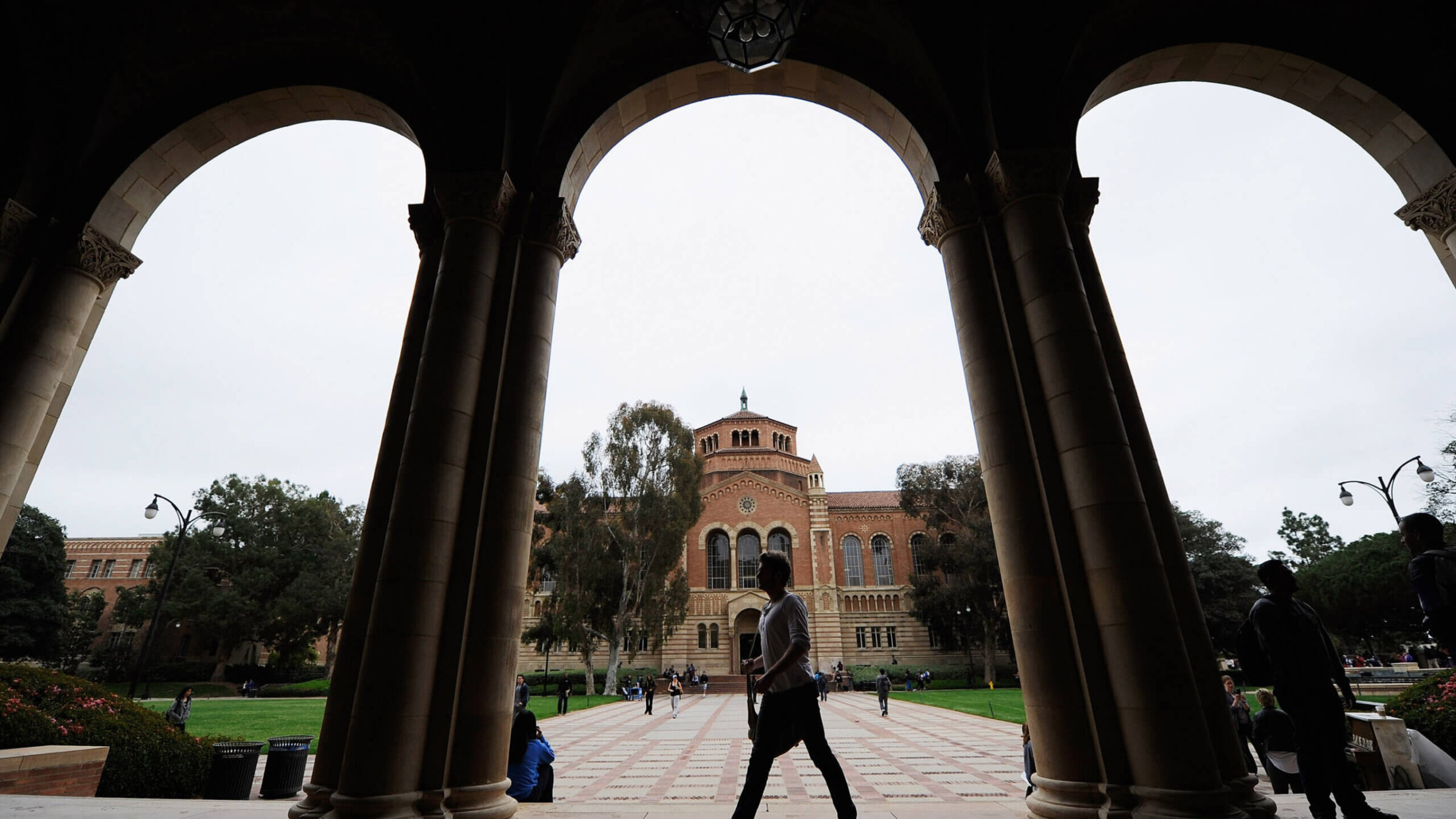Socioeconomic policies ensure diverse campuses — not affirmative action
California, which banned affirmative action in 1996, boasts some of the most diverse college campuses in the country

A student walks near Royce Hall on the campus of UCLA on April 23, 2012 in Los Angeles, California. Photo by Kevork Dejansezian/Getty Images
There is little doubt that the U.S. Supreme Court’s affirmative action decision will profoundly impact admissions policies at universities across the nation. The court has forbidden taking race and ethnicity into consideration in admissions’ decisions.
Race and ethnicity in college admissions have been a flashpoint of contentious debate since at least 1974 (DeFunis v Odegaard). A new poll by the Pew Research Center found that 50% of Americans are opposed to race and ethnicity being considered in college admissions.
Until recently, most mainstream Jewish organizations like the Anti-Defamation League and, at one time, the American Jewish Committee, shared this opposition to race, religion, and other immutable characteristics of birth being examined to determine college acceptance. I served as counsel for the ADL in the pivotal Regents of the University of California v. Bakke decision in the California Supreme Court case, in support of this opposition to affirmative action.
Even figures who desired a more equitable and just society for racial minorities questioned the usefulness of affirmative action. One of the most respected liberals in the history of the Supreme Court, Justice William O. Douglas, wrote in 1974 in a seminal case involving affirmative action and university admissions (DeFunis v Odegaard) that “the Equal Protection clause commands the elimination of racial barriers, not their creation in order to satisfy our theory as to how society ought be organized.”
What has been largely ignored in recent years, and in the debate surrounding the decision, is that admissions policies that focus on socioeconomic and related disadvantages can be equally successful at ensuring a diverse student body, with California as the prime example.
Any college or university that seeks to increase diversity can see what California has done and endeavor to emulate what The New York Times has described as the nation’s “upward mobility machine.” California moves socioeconomically disadvantaged students up the earnings scale, retains world-class quality educational status, does not grant preferences based on race or ethnicity and achieves racial and ethnic diversity all at the same time.
In 1996, voters in California approved Proposition 209, an amendment to the California Constitution which requires that “the state shall not discriminate against, or grant preference to, any individual or group on the basis of race, sex, color, ethnicity or national origin.” Because of Prop. 209, California’s public universities have used color-blind admissions criteria for over 25 years and have figured some important things out.
The UCs have made a concerted effort to recruit and admit poorer students and those who are the first in their family to attend college. As The New York Times observed,”the University of California took deliberate steps to attract students of modest means. It kept tuition low and did far more to recruit community-college transfers than most elite state universities.”
What has been done in California is not easy: the process of evaluation is difficult and the expense of identifying and supporting potential students is significant. The UCs spent over $500 million on outreach programs aimed at students from low-income families, students whose families have little or no previous higher education. They also seek to evaluate each applicant using a “holistic” approach. The aim is not just to admit students to fulfill pre-ordained categories, but to ensure that success awaits each admit.
How have they done? Earlier this year, the rankings of over 900 colleges and universities nation-wide was published; if the schools are filtered by racial diversity and academic excellence, six of the top dozen public universities are California public colleges. That is, 50% of the most diverse public universities in the nation are ones which are constitutionally forbidden from considering race or ethnicity, yet nonetheless manage to achieve the highest level of racial diversity.
If they are filtered for economic diversity, economic mobility, and academic excellence, 11 of the top 25 (44%) colleges and universities nationwide are public institutions in California (UCs and Cal States) — all of which are subject to the Prop. 209 strictures.
As for the facts, in 1995 the UC (system-wide) 4% of all applicants were Black, 15% were Hispanic, 30% were Asians and 41% were whites. Compare that to 2022, the percentage of Blacks increased 5% (6,399 individuals), Hispanics grew to 27%, Asians constituted 31% of admittees, and whites fell to 19%. In every category, the absolute number and the percentage of minorities has increased without taking race or ethnicity into account.
The data are similar to what has taken place in the California State College and University system (the larger and less difficult schools to be admitted to). In 2022, of all the applicants Cal State campuses admitted, 44% of them were Latino students (about 130,000 young people), 17% were Asian, 22% were white students and 4% were Black.
If universities around the country are willing to engage in the kinds of programs that the University of California has developed over the past quarter century, the successes of California can be replicated elsewhere.
It is a testament to what’s possible when universities focus on the right issues and commit to bring about change.
To contact the author, email [email protected].
Listen to That Jewish News Show, a smart and thoughtful look at the week in Jewish news from the journalists at the Forward, now available on Apple and Spotify:
















